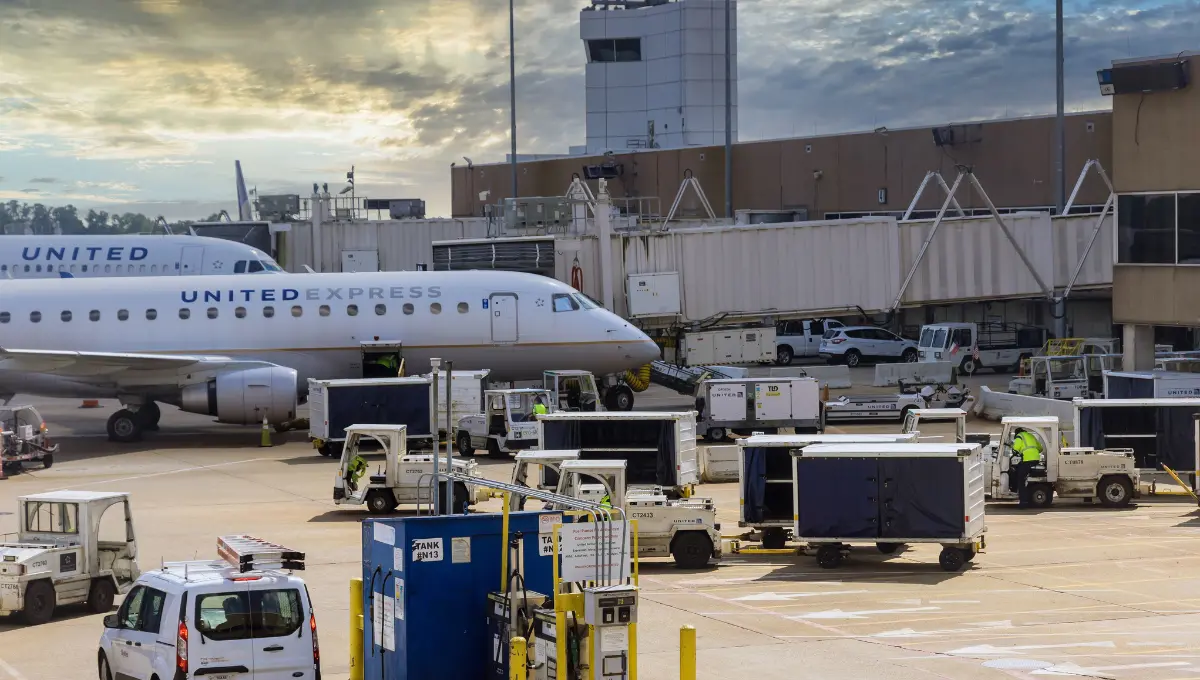Even with a series of notable incidents occurring on United Airlines flights in the past few days, experts reaffirm that commercial air travel remains highly safe.
Anthony Brickhouse, an aerospace safety professor at Embry-Riddle Aeronautical University in Daytona Beach, Fla., emphasizes, “The aircraft we travel on today are safer than ever before.”
In the recent week, United Airlines faced scrutiny due to a string of emergencies: On the prior Monday, one of its planes had an engine incident where it ingested bubble wrap, leading to a mid-air fire. Following that, on Thursday, an aircraft lost a tire which then collided with a parked car shortly after departure. And on Friday, another United Airlines flight encountered a hydraulics problem.
None of the United incidents resulted in injuries, as confirmed by the airline in a statement emphasizing safety as its utmost concern. Each event will undergo thorough investigation.
These successive emergencies occurred just two months after an Alaska Airlines flight encountered a door plug tear, causing a significant hole. Fortunately, no serious injuries were reported among the passengers.
Notably, the aircraft involved in the Monday and Thursday United incidents, along with the Alaska Airlines flight, were manufactured by Boeing. Conversely, the aircraft involved in Friday’s emergency was produced by Airbus.
Despite the recent unsettling events, aviation safety experts stress that these incidents do not represent the entirety of the aviation landscape. They caution against hastily dismissing Boeing, United Airlines, or air travel as a whole.
Transportation Secretary Pete Buttigieg, addressing the recent anxieties surrounding flying, pointed to federal data indicating a consistent improvement in flight safety over the years. “American aviation remains the safest mode of travel globally,” he remarked during a press conference on Monday.
Here’s what you need to understand:
Globally, accidents and fatalities involving commercial airplanes are rare and on the decline. According to the International Air Transport Association (IATA), which represents airlines worldwide, the number of accidents involving commercial aircraft has been decreasing over time.
In 2023, the commercial aviation sector experienced a total of 30 accidents, with only one being fatal — resulting in 72 fatalities in Nepal due to what investigators determined as pilot error. Comparatively, the previous year saw five fatal accidents with 158 fatalities. Going further back to 2013, there were 11 fatal accidents causing 638 fatalities, according to IATA data.
In other words, the likelihood of boarding a fatal flight has been diminishing. Arnold Barnett, a statistician at the Massachusetts Institute of Technology (MIT) specializing in airline safety, explained to NPR that between 2018 and 2022, the odds of a passenger being killed in a flight anywhere in the world were 1 in 13.4 million. Contrastingly, from 1968 to 1977, the chance stood at 1 in 350,000.
Read also: Hamburg Man’s Alligator Seizure Spurs Community Support
“Worldwide, air travel is incredibly safe, but within the United States, it reaches an exceptional level,” noted Barnett.
In the U.S., there hasn’t been a fatal crash involving a major American airline since February 2009, although there have been a few fatalities since then.
Brickhouse, who has dedicated over 25 years to studying aviation safety, often emphasizes to individuals that the greatest risk during any air journey typically lies in driving to the airport.
With over 40,000 fatalities occurring on U.S. roads each year, he underscores, “Aviation remains the safest mode of transportation.”
Planes are engineered to continue functioning even in the event of mishaps. Despite encountering a tire loss, an engine fire, and a hydraulic problem, all three United Airlines planes managed to land safely last week.
Brickhouse emphasizes, “While we shouldn’t downplay these recent incidents as they were indeed serious, aircraft are designed with redundancy in mind. This means that if one system fails, there’s a backup in place.”
United Airlines confirms that its planes are constructed to safely land even with missing or damaged tires. Additionally, the aircraft affected by the hydraulic issue were equipped with two extra hydraulic systems as a precautionary measure.
United Airlines Flight Safety: Crew Training and Passenger Precautions
Pilots and flight crews undergo extensive training to handle emergencies effectively, just as aircraft are designed to function amidst unexpected situations.
Contrary to common belief, flight attendants’ primary responsibility is safety rather than serving drinks or assisting with seat assignments, as Brickhouse explains. Both pilots and flight attendants undergo rigorous training, including practical exercises, to prepare for scenarios like water evacuations, smoke-filled cabins, and even laptop fires.
Passengers can also play a role in enhancing their own safety. Brickhouse advises against wearing polyester clothing or heels during flights, as these items could hinder evacuation efforts in emergencies.
According to Brickhouse, wearing natural fibers like cotton and opting for comfortable, closed-toe footwear can offer additional protection in extreme situations such as fires. He also suggests that passengers eat a meal before boarding as it enhances “survivability” in case there’s a prolonged period without food available.
During the flight, Brickhouse advises passengers to pay attention to safety briefings and familiarize themselves with the locations of emergency exits. “It only takes a few minutes, and then you can focus on other tasks,” he notes.

